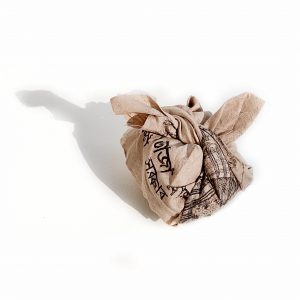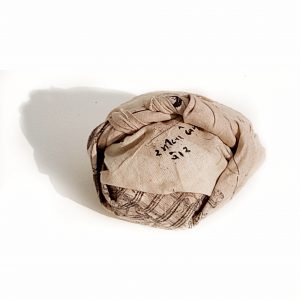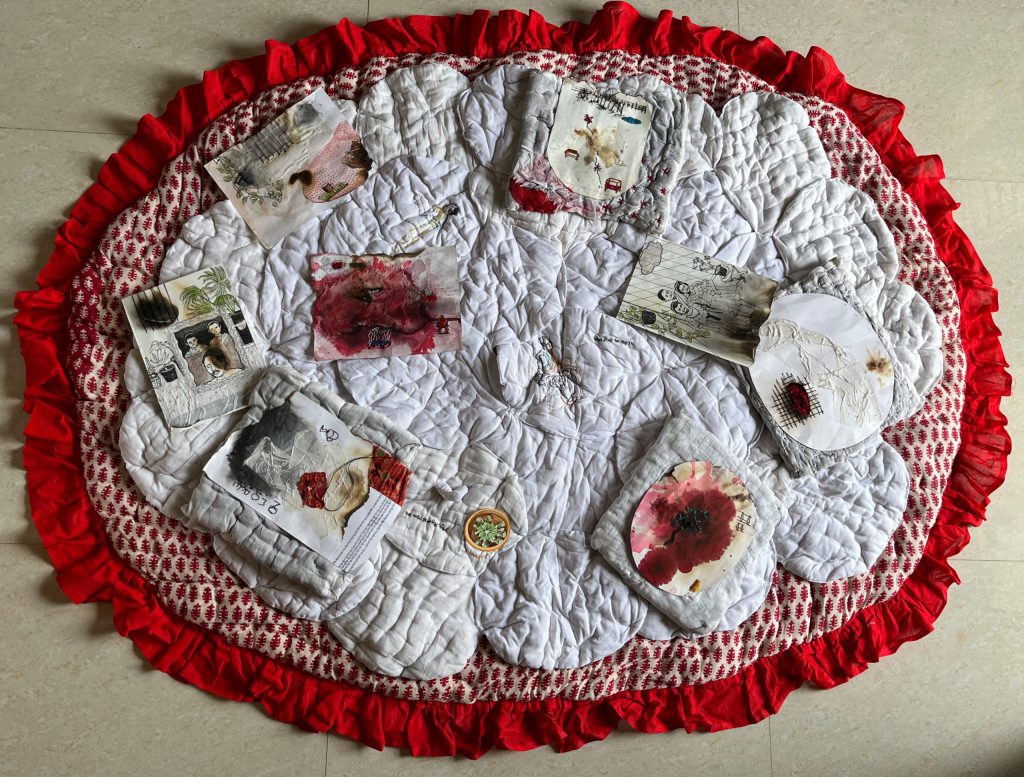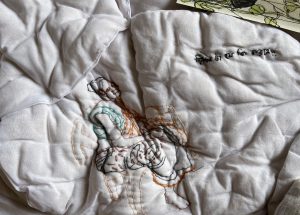Blogs
Archives of Memories
Ishwari Arambam
A review of artworks created by two artists, Keerti Pooja and Sriparna Dutta, as part of the India Artist Relief Fund, 2021.
In June of 2021, MAP in partnership with 1Shanthiroad Studio launched a relief fund to support artists and their work during the difficult times posed by the Covid 19 pandemic. Open to all practising artists in India, the relief fund received an overwhelming response with over 1000 applications. Twenty artists were selected by an independent jury comprising Paula Sengupta, Radha Mahendru, Indrapramit Roy and Suresh Jayaram. The jury members also offered mentorship conversations to the artists.
In an attempt to showcase the exciting work that was achieved under this grant, we have placed the grantees and their artworks in conversation with each other, to respond to and facilitate a conversation around the common themes or concerns addressed in their art.
Going through Connecting the Dots II and Presence of my Ruined Memory – works created by artists as part of the India Artist Relief Fund, 2021 – is like reading books that are still being written. Both works are inspired by the artists’ personal universes, memories, and long-held preoccupations which are at different stages of their evolution.
In Keerti Pooja’s Connecting the dots II, cloths etched with drawings and texts are presented as potlis or bundles of cloth. Across bazaars of India, you will find similar objects as women vendors and sellers ingeniously tie the ends of their sarees in little bundles to carry money, flowers and other special items. These potlis similarly offer an image that immediately begs questions – what is inside? Are they empty or do they hold treasure? If they are not empty, what’s inside? Is it organic or inorganic? Is it fresh or rotten?
Born of the artist’s curiosity, Connecting the Dots II is an exploration (one of many) of the “processes that underlie bazaars”. Shuffling between Vadodara and Visakhapatnam, Pooja had been documenting her observations of bazaars in Indian cities long before the pandemic. Each cloth that makes up a potli has drawings of people whose livelihood depends on making a small wage in markets, along with pertinent information she noted such as the person’s name, of what they sell and how they speak. The cloth is knotted in a way that most of this information is not revealed with the very intent of evoking similar curiosity in the viewer. This, it seems to me, inspires a kind of sensitivity towards the operative nature of our surroundings, our city, our bazaars.


Connecting the Dots II, Keerti Pooja, 2021, Etching print on cloth, Images courtesy the artist
The potlis hold different information when viewed from different angles, teasing up a puzzle. The viewer may attempt to piece the different angles together in order to form a comprehensive image in one’s imagination. This hints at the ever-changing scenes of a bazaar, and the limitations of our knowledgeability – what is visible to us is only a subset of the complete picture, ultimately producing a body of work that is fertile with numerous interpretations to be made on each encounter.

Presence of my Ruined Memory, Sriparna Dutta, 2021, Handstitched circular pillow stitched on quilt, Image courtesy the artist
In a conversation with Sriparna Dutta, she spoke of Presence of my Ruined Memory as an autobiographical work. The work is a response to the death of a loved one and an anticipation of the loss of another. After losing her diary, Dutta was compelled to record the memories she treasured with her parents visually. During her stay at home in Kolkata at the height of the pandemic, she started collecting used cloth such as her mother’s red saree, pillow cover, other bits and began building what would become a layered multimedia piece that juxtaposes her memories. Through this process, she attempts to make present memories of her mother who was oftentimes absent at home due to her working hours, and her father who passed, binding them metaphorically.


Presence of my Ruined Memory, Sriparna Dutta, 2021, Handstitched circular pillow stitched on quilt, Image courtesy the artist
Set against a large circular quilt, you can see frames filled with detail — frills, patches of embroidery, painted and stitched, and burnt paper — representing minutiae from the artist’s memories. By utilising used cloth, it also captures “bodily essence, scent, touch and body” adding depth to the attempted preservation. A closer look shows you a very intimate world – an embroidered figure of the mother, a sketched family portrait of sister, father and herself, and the words NO MORE signalling death and loss. It is warm, brimming with emotion, and nostalgic.
Although Dutta’s work varies from Pooja’s in its sense of completeness, both works can be studied as archives that are witness to their persistence and consistency in pursuing the intricate trivialities of everyday life that make up their memories – to remember and to share. Furthermore, they both spoke of the people manifested in their works as not subjects but collaborators.
The versatility of cloth as mediums in both works act as a memory device. Despite the pandemic having come to an almost-standstill, their works are much-needed reminders of love, loss, and the interconnectedness that prevailed during the most momentous event in recent times.
Ishwari Arambam is an Event Coordinator at MAP. Her love language involves jazzy hip-hop, homemade thalis and brothy meals.








